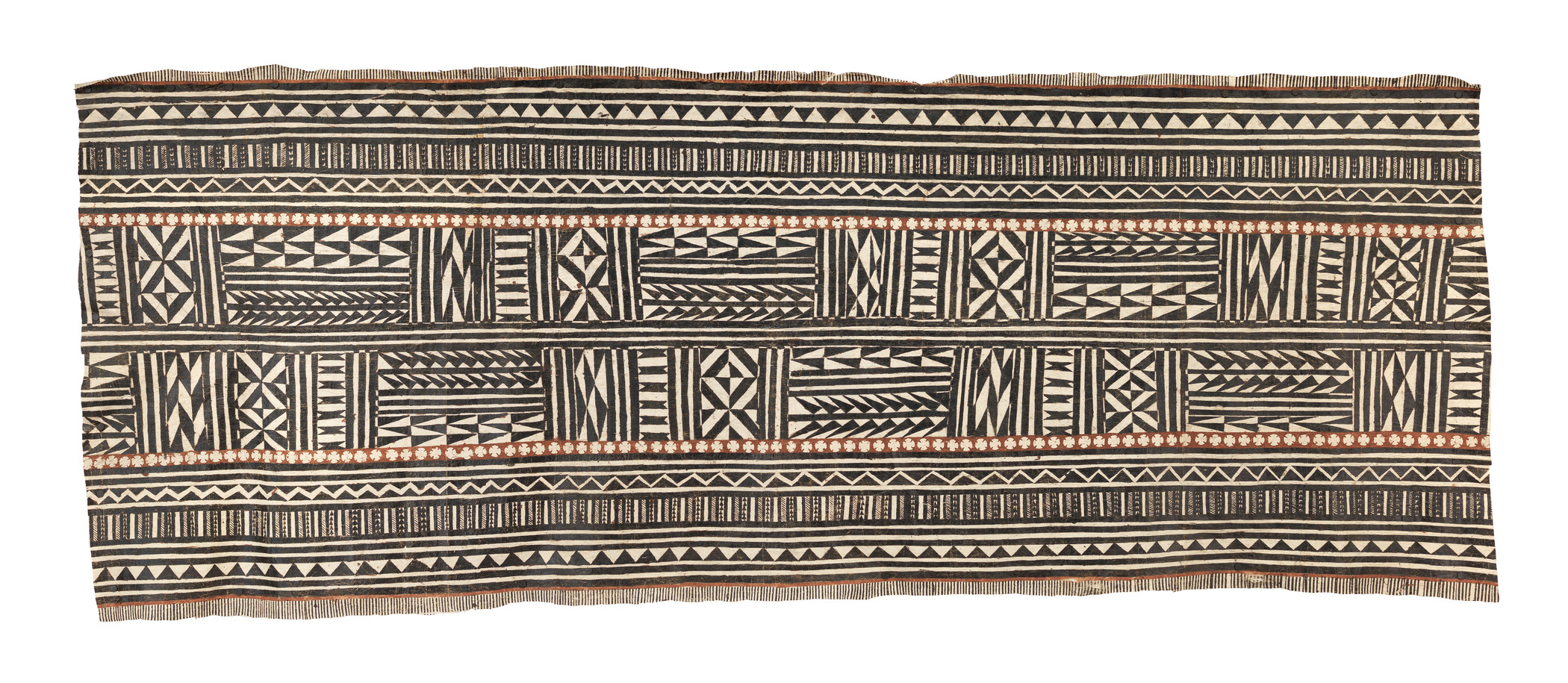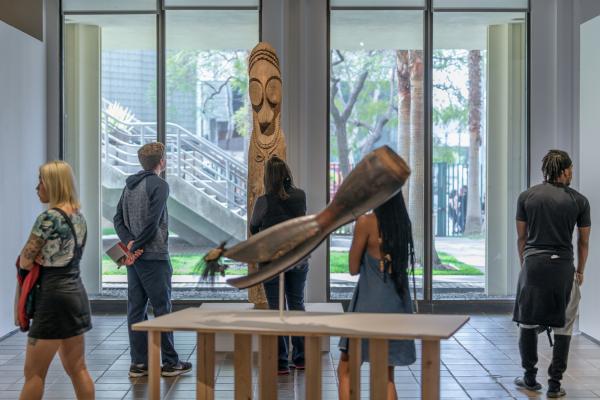The current installation of the Art of the Pacific galleries features the remarkable textiles known as tapa, or kapa in the Hawaiian Islands. In addition, select objects from LACMA's growing permanent collection complement these textiles. The cloth is generally made from the bark of the paper mulberry tree, while fibers from other plants, such as breadfruit, banyan, wild fig, hibiscus, or banana are less commonly used. The inner bark of the mulberry is soaked, and beaten with a wooden tool against a hard surface, separating the fibers. The cloth is pounded with successively smaller grooved mallets, extending the size of the sheet and often layering or felting together the sheets to make larger pieces.

In anticipation of construction of the new permanent collection building at LACMA, the galleries featuring these treasures are closing on February 3, 2019 for collection inventory and packing. During construction we will continue to showcase LACMA's collections on the west side of campus in BCAM and the Resnick Pavilion, in traveling shows, and on loan, and they will continue to be accompanied by our education programs, music, and more. Currently we are hard at work on a major upcoming exhibition, Fiji: Art & Life in the Pacific, which will be on view in the Resnick Pavilion from December 15, 2019 through June 14, 2020.
LACMA's new permanent collection building, designed by Peter Zumthor, is expected to replace the Ahmanson Building, the Art of the Americas Building, the Hammer Building, and the Leo S. Bing Center, and is scheduled to be open by the end of 2023.
Be sure to visit the Art of the Pacific galleries before they close!



